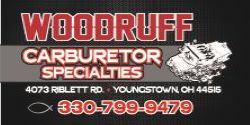You are using an out of date browser. It may not display this or other websites correctly.
You should upgrade or use an alternative browser.
You should upgrade or use an alternative browser.
67 Satellite 383 refresh - questions/advice
- Thread starter copper67sat
- Start date
BSB67
Well-Known Member
…….and found all of the exhaust valves were very tight in their guides while all the intakes dropped right out. The only exhaust valves that came out with minimal effort were #2 and #4. The rest will not come out without either using a puller from the valve side or drift from the stem side…….
Were they tight in the range of normal operating travel, or just during removal?
Always take a flat file and clean-up the valve where the keepers sit and on the top edge of the valve.
- Local time
- 4:12 PM
- Joined
- Aug 24, 2015
- Messages
- 812
- Reaction score
- 1,622
- Location
- West Palm Beach, FL
I was wondering why you hadn't been updating that thread. It's a good resource for what my engine should have had.My build is in paint jail at present. Self imposed, because I fired the guy that did much of the work, and am having trouble finding a competent person to finish up.
From what you indicated, you have some 915’s that would fill the bill. Your #1 problem is the pistons and you are going in the right direction there.
I am still on the fence here. The ported 915s I have look pretty rough. I don't remember where I got them, but know I didn't pay much, if anything, for them. Looking closer, I don’t think it was a professional job. The other pair came from another '67 383 I have and look untouched. I did a quick cc on one chamber and came up with 80cc, same as my current 516s. Both 915s have small valves and what I think are original, non-hardened exhaust seats.
My current thinking is that I can get a better flowing set of aluminum Stealth heads for about the same $ as it will cost to fix up any of my iron heads. Plus, I need to find a competent machine shop around here to do the work. I don't trust either of the 2 closest ones and I don't have any strong referrals yet since most of my Mopar buddies have moved away.
- Local time
- 4:12 PM
- Joined
- Aug 24, 2015
- Messages
- 812
- Reaction score
- 1,622
- Location
- West Palm Beach, FL
They are all snug compared to the intakes which dropped right out. Some will come out with minimal effort after cleaning up the lock grooves. 3 & 6 are tight within the normal operating range and the guides are moving in the head more than the valve is moving in the guide - I haven't seen 6 move in the guide at all.Were they tight in the range of normal operating travel, or just during removal?
Always take a flat file and clean-up the valve where the keepers sit and on the top edge of the valve.
I just set them in the corner and walked away after seeing that.
Last edited:
- Local time
- 4:12 PM
- Joined
- Aug 24, 2015
- Messages
- 812
- Reaction score
- 1,622
- Location
- West Palm Beach, FL
The 2315 has a CH of 1.92”. That piston will be about 0.015” - 0.018” below the deck in an in cut block.
That matches my calcs assuming the current pistons are Silv-O-Lite 1271s with a 1.848" CH. The block was not cut during the original rebuild, but may need skim cut now - need to check that.
With 80cc heads, Cometic C5460-027 gaskets (if I go with the Stealth heads) and 2315s. I calculated something like 9.8 CR. Accounting for the fire ring volume dropped that a bit.
EDIT: Rechecked my calcs. I was double-bookeeping the gasket compressed volume because Cometic provides that spec whereas I was calculating it for other options. Updated the calc and CR would be 9.8 with the setup above. Can always go lower CR with a thicker gasket, but I was trying to see how high I can get it without doing a lot of machining.
Last edited:
I have $760 in the 516 original heads. That's new valves, 1.74 and hardened exhaust seats, and the total valve job. Hope this helps.I was wondering why you hadn't been updating that thread. It's a good resource for what my engine should have had.
I am still on the fence here. The ported 915s I have look pretty rough. I don't remember where I got them, but know I didn't pay much, if anything, for them. Looking closer, I don’t think it was a professional job. The other pair came from another '67 383 I have and look untouched. I did a quick cc on one chamber and came up with 80cc, same as my current 516s. Both 915s have small valves and what I think are original, non-hardened exhaust seats.
My current thinking is that I can get a better flowing set of aluminum Stealth heads for about the same $ as it will cost to fix up any of my iron heads. Plus, I need to find a competent machine shop around here to do the work. I don't trust either of the 2 closest ones and I don't have any strong referrals yet since most of my Mopar buddies have moved away.
- Local time
- 4:12 PM
- Joined
- Aug 24, 2015
- Messages
- 812
- Reaction score
- 1,622
- Location
- West Palm Beach, FL
I think I spent about that much on the current 516s in 1990 - hardened seats, 3-angle valve job, bronze guides, milled surface, new valves. Head work and parts were about half of the overall machine shop cost. South FL shop rates are probably higher than AL, but sounds like you got a good deal to me.I have $760 in the 516 original heads. That's new valves, 1.74 and hardened exhaust seats, and the total valve job. Hope this helps.
When you go to larger valves, you get some port work without asking, because they have to blend the cuts into the ports.I think I spent about that much on the current 516s in 1990 - hardened seats, 3-angle valve job, bronze guides, milled surface, new valves. Head work and parts were about half of the overall machine shop cost. South FL shop rates are probably higher than AL, but sounds like you got a good deal to me.
- Local time
- 4:12 PM
- Joined
- Aug 24, 2015
- Messages
- 812
- Reaction score
- 1,622
- Location
- West Palm Beach, FL
Jerry, did you mill your heads and/or CC them? Curious where you think the CR is.When you go to larger valves, you get some port work without asking, because they have to blend the cuts into the ports.
No to both, but my guess is somewhere between 9.5 and 9.8. With all original components to the engine, I think it's as good as it left the factory in 67. I used steel shim head gaskets just as it left the factory with.Jerry, did you mill your heads and/or CC them? Curious where you think the CR is.
dvw
Well-Known Member
This is the classic how much performance do you want vs how much budget. If it's tight? I'd check the bearings and replace if needed. Thats as far as I'd go with the short block. The only reasonable gains in power in the short block are compression or a longer crank. Both are costly. Milling won't be worth the cost and hassle of what the gain would be. So what does that leave? Cam appears in good shape. It's also a very good cam for light performance use. With low compression you can't add much more cam. Shim head gaskets are a no cost compression boost. So that leaves heads. Depends on machining costs. Could be a toss up with aluminum heads. The closed chamber iron head will have more compression but the ports, chamber design, and plug location aren't great. The aliminum head would like more compression but the short block is what it is. I'd do what ever was the most cost effective. It's a driver 383 with a 3.23 gear and A/C. Don't try to make it what it's not. Repair whats broke and enjoy it.
Doug
Doug
BSB67
Well-Known Member
This.This is the classic how much performance do you want vs how much budget. If it's tight? I'd check the bearings and replace if needed. Thats as far as I'd go with the short block. The only reasonable gains in power in the short block are compression or a longer crank. Both are costly. Milling won't be worth the cost and hassle of what the gain would be. So what does that leave? Cam appears in good shape. It's also a very good cam for light performance use. With low compression you can't add much more cam. Shim head gaskets are a no cost compression boost. So that leaves heads. Depends on machining costs. Could be a toss up with aluminum heads. The closed chamber iron head will have more compression but the ports, chamber design, and plug location aren't great. The aliminum head would like more compression but the short block is what it is. I'd do what ever was the most cost effective. It's a driver 383 with a 3.23 gear and A/C. Don't try to make it what it's not. Repair whats broke and enjoy it.
Doug
Similar threads
- Replies
- 9
- Views
- 476
- Replies
- 2
- Views
- 377
- Replies
- 11
- Views
- 936
















